Let’s face it. Humans don’t seem to be the most eco-friendly animals, what with our love for industrialization, burning fossil fuels and causing global warming and all. But not all of earth’s creatures are so damaging in their existence. Some are even beneficial to the environment and help offset the damage we’ve caused. Not that we’re particularly grateful for it. Every year between 10,000-100,000 species go extinct because of climate change, loss of habitat or hunting.
The earth and its creatures are deeply connected. Each relies on the other for healthy and balanced ecosystems. And while nature could exist without humans, humans couldn’t exist without nature. We’ve gathered some of our favourite eco-friendly animals to celebrate all that they do for our planet and share how we can help them create a healthy environment for everyone to enjoy.
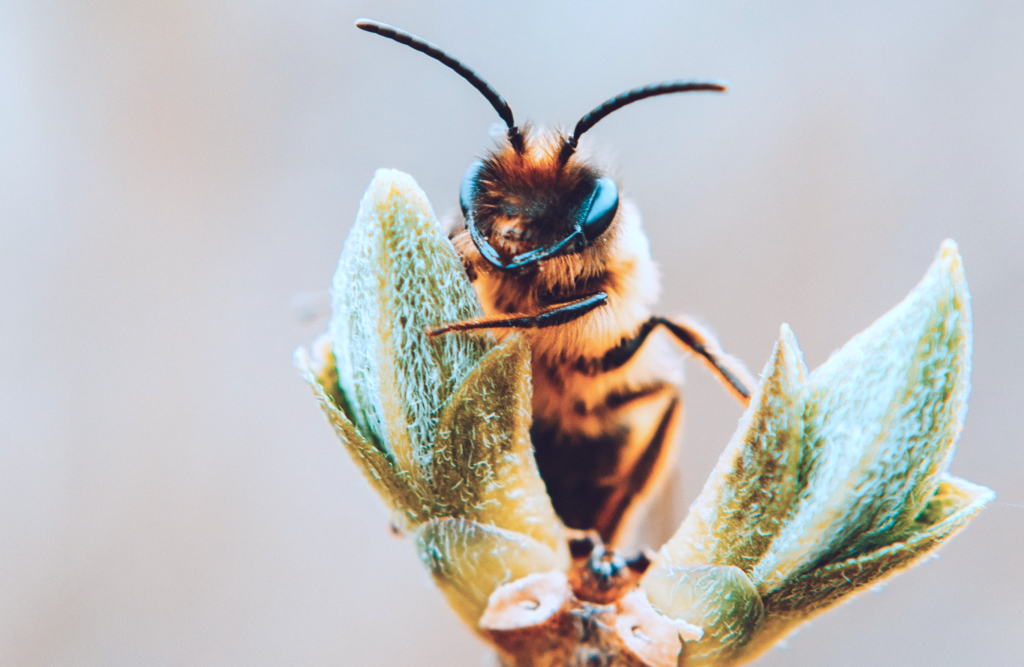
1. Bees
How Bees Help The Environment
The first on our list of eco-friendly animals are bees. Bees are one of the world’s best pollinators and without them we’d be left with a lot fewer food choices. According to the United Nations Food and Agriculture Organization, we depend on bees for a third of the world’s food.
Over 20,000 bee species globally play a part in keeping our ecosystems balanced and healthy. Unlike the famous Honey Bee, most of them are solitary and don’t live in hives. They provide a variety of ecosystem services from pollination to food and even medicine.
How We Can Help Bees
Around the world, one in six bees are extinct regionally and over 40% are vulnerable to extinction. In Canada, eight wild bee species are on Canada’s species risk register. Native bee species like the rusty-patched bumble bee are classified as endangered having lost at least 50% of their population.
- Plant native wildflowers, helping bees find food throughout the year
- Limit pesticide use to bee-friendly pesticides only
- Create a wintering habitat to help them last through the colder months
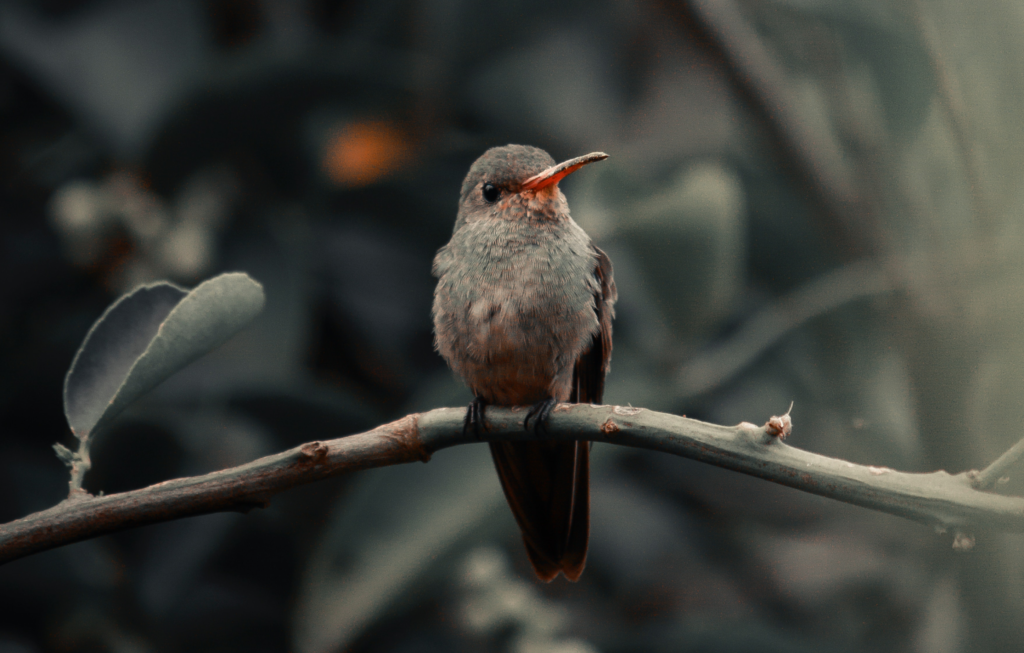
2. Birds
How Birds Help The Environment
Birds are one of the most important wildflower pollinators and eco-friendly animals in the world, with each area boasting its own specialized bird pollinators. In North America, hummingbirds reign as one of the most important pollinators, playing a key role in keeping a healthy ecosystem.
Birds are excellent at spreading seeds and spores, helping build nutrient networks for the surrounding environment and creating more plants and food sources. While they fly around, pollinating and dispersing seeds, they also work as natural pest controllers, eating 400 to 500 million metric tons of insects every year.
How We Can Help Birds
Two-thirds of North American birds are at risk of extinction due to climate change. We can help birds, and every other animal on this list, by stabilizing our carbon emissions and ensuring we don’t increase global temperatures beyond 1.5 degrees celsius. In fact, 76% and nearly 150 bird species could avoid extinction if we solve the root of the problem. If only it were that easy. While we collectively work on solving the big issues, there’s still plenty you can do individually and locally to help birds.
- Feed wild birds in winter.
- Plant trees and bushes for natural shelter and food.
- Provide birdhouses and nesting homes.
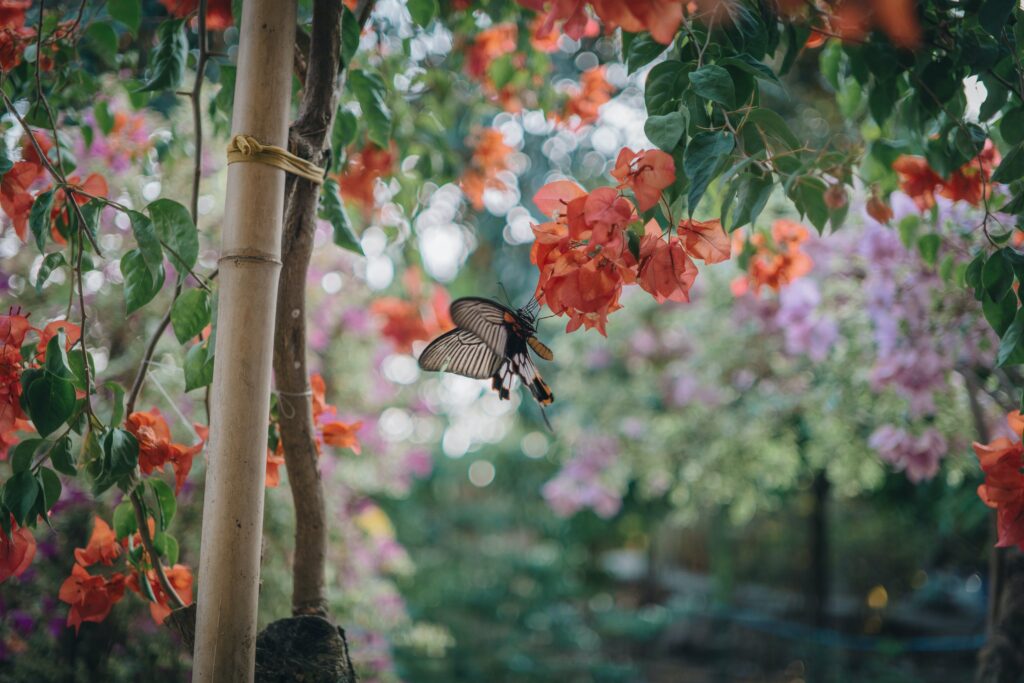
3. Butterflies
How Butterflies Help The Environment
Butterflies are pollinators, like birds and bees. They’re attracted to brightly coloured flowers and help transport pollen around as they travel between flowers. Without their pollination, fruits, vegetables and flowers would have a hard time producing new seeds.
As beautiful as they are, butterflies are also an important part of the food chain. Caterpillars and butterflies help feed other important ecosystem animals like birds. A bad year for eco-friendly animals like butterflies can have a knock on effect throughout our environment.
How We Can Help Butterflies
Many butterflies rely on climate and weather cues to trigger reproduction, migration and hibernation. But due to extreme weather conditions caused by climate change, their habitats and food sources are decreasing, causing butterfly populations to decline. From 1996 to 2014, Monarch butterfly populations decreased by 86%, a trend that’s since continued.
- Plant pollinator flowers and milkweed for Monarchs. Milkweed is the only plant Monarch butterflies will lay eggs on.
- Avoid using herbicides or pesticides. Insecticides can kill butterflies and caterpillars.
- Help monitor Monarch butterfly populations and habitats through Mission Monarch.
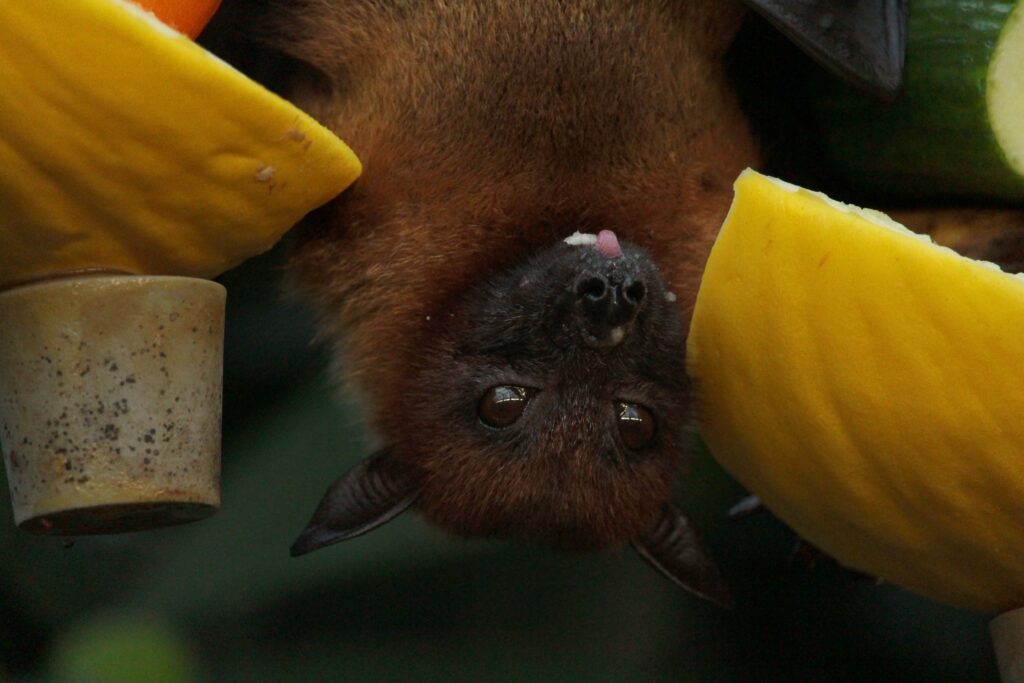
4. Bats
How Bats Help The Environment
Next on our list of eco-friendly animals are bats. Unfortunately, thanks to vampire movies, bats tend to have a bad reputation and end up scaring people more than they’re appreciated. But bats are incredibly important for keeping our ecosystems in balance. They make up over a fifth of all mammals on earth and are the only mammal capable of true flight.
Bats are the agricultural industry’s best friend and one of the best pest control agents on the planet. Some bats can catch up to 1,000 insects per hour, keeping them from destroying crops and causing disease. A single neighbourhood brown bat can eat up to 500 mosquitos in an evening, with a colony eating up to 50,000 per night. Bats are so important for agricultural pest control they’re estimated to be worth over 3.7 billion a year in North America alone.
How We Can Help Bats
Globally, over 16% of bat species are classified as threatened. With an increase in global temperature, bat plant and insect food sources, water availability and habitats are decreasing. In fact, 43% of bat species are currently threatened by habitat loss in particular.
In Canada, we have 18 bat species, three of which are endangered – the Little Brown Bat, the Northern Long-Eared Bat and the Tri-coloured Bat. White-Nose Syndrome and habitat loss are the threats to Canadian bats. But there’s a few ways you can help keep bat populations healthy.
- Bats are natural pest control, limit your use of pesticides. Bats can eat and be poisoned by insects that have come in contact with pesticides.
- Create bat habitats by planting different trees and leaving dead softwood in your garden.
- Avoid going into caves and spreading White-nose Syndrome.
- Report bat sightings (healthy or otherwise) to the Canadian Wildlife Health Cooperative.
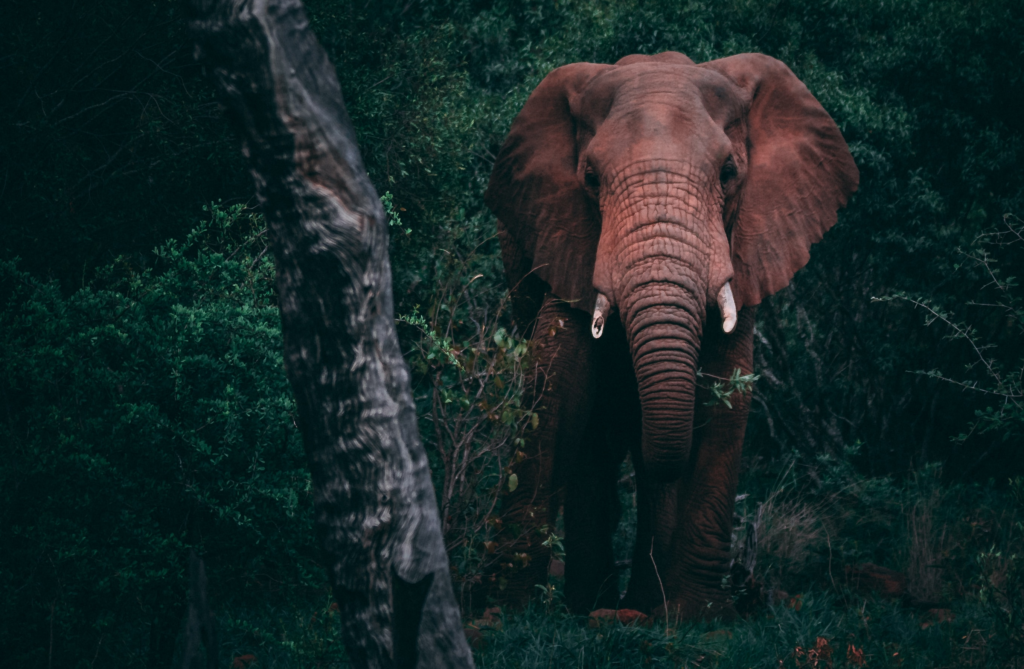
5. Elephants
How Elephants Help The Environment
Elephants are the largest land mammal on earth and one of the most eco-friendly animals. Due to their size, they can make an enormous impact on forestry as they move through it, stomping out invasive plants and making room for larger trees to grow. Research shows this activity has a significant impact on carbon stored in forests. If African forest elephants were to go extinct there would be a 7% decline in vegetation, the equivalent of three billion tonnes of carbon. Each individual elephant helps capture over 9,000 tonnes of carbon in its lifetime.
During a drought, elephants can also help create water sources for themselves, and other animals, by using their trunks to dig for underground water sources.
How We Can Help Elephants
Elephants need large areas with food, water and shelter to survive. On average, they can roam up to 30 miles a day and consume hundreds of pounds of plant matter. But due to loss of habitat and the poaching for the ivory industry, about 90% of African elephants have been wiped out in the last 100 years. According to the IUCN Red List of Threatened Species, the African Forest Elephant is now Critically Endangered and the African Savanna Elephant is Endangered.
- Don’t support companies that exploit elephants for tourism and entertainment.
- Don’t buy ivory products. Ivory can come in many forms including jewellery, flatware handles, piano keys and chess sets.
- Buy Fair-Trade coffee. Commercial coffee crops grown in plantations can destroy natural elephant habitats.
- Learn about and support organisations working to prevent illegal elephant poaching
- Support organizations protecting wild elephant habitats and building natural sanctuaries.
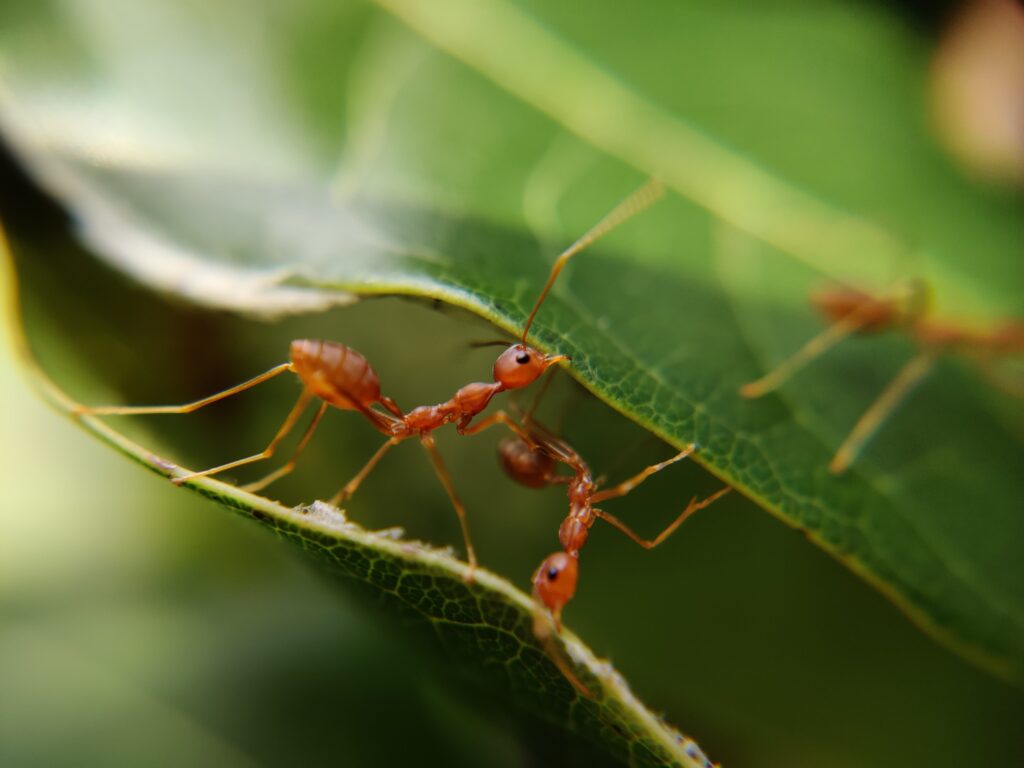
6. Ants
How Ants Help The Environment
Ants are powerhouses of the planet, helping sustain the foundation of life for many flora and fauna species – soil. By digging and creating tunnels through the earth, these eco-friendly animals aerate soil, recycling nutrients and produce healthy soil for plant life. A healthy ant population decreases the need for chemical fertilizers and irrigation. In fact, research has even found that in times of drought, ants can increase crop production by 36%.
Ants do their part in the seed dispersal arena too. Some ants will take seeds down their tunnels, providing a safe space for the seeds to germinate and sprout, creating new plant life.
How We Can Help Ants
There’s more than 12,000 ant species globally, with only 100 species found in Canada. Although ants are resilient, surviving on every continent except Antarctica, some species have already been impacted by the effects of climate change. Research in 2020, found that due to a decrease in their natural habitat, Red Wood Ants colony sizes also decreased. While most people want to get rid of ants from their homes, they do an enormous amount of good for the planet, from decomposition to pest control. While you might not want to encourage a colony close to your doorstep, there’s still some ways you can help ants keep a balanced ecosystem.
- Avoid insecticides. Insecticides are harmful to ants while they’re acting as natural pest control in your garden, eating many common insects like flies, bed bugs, cockroaches and even termites.
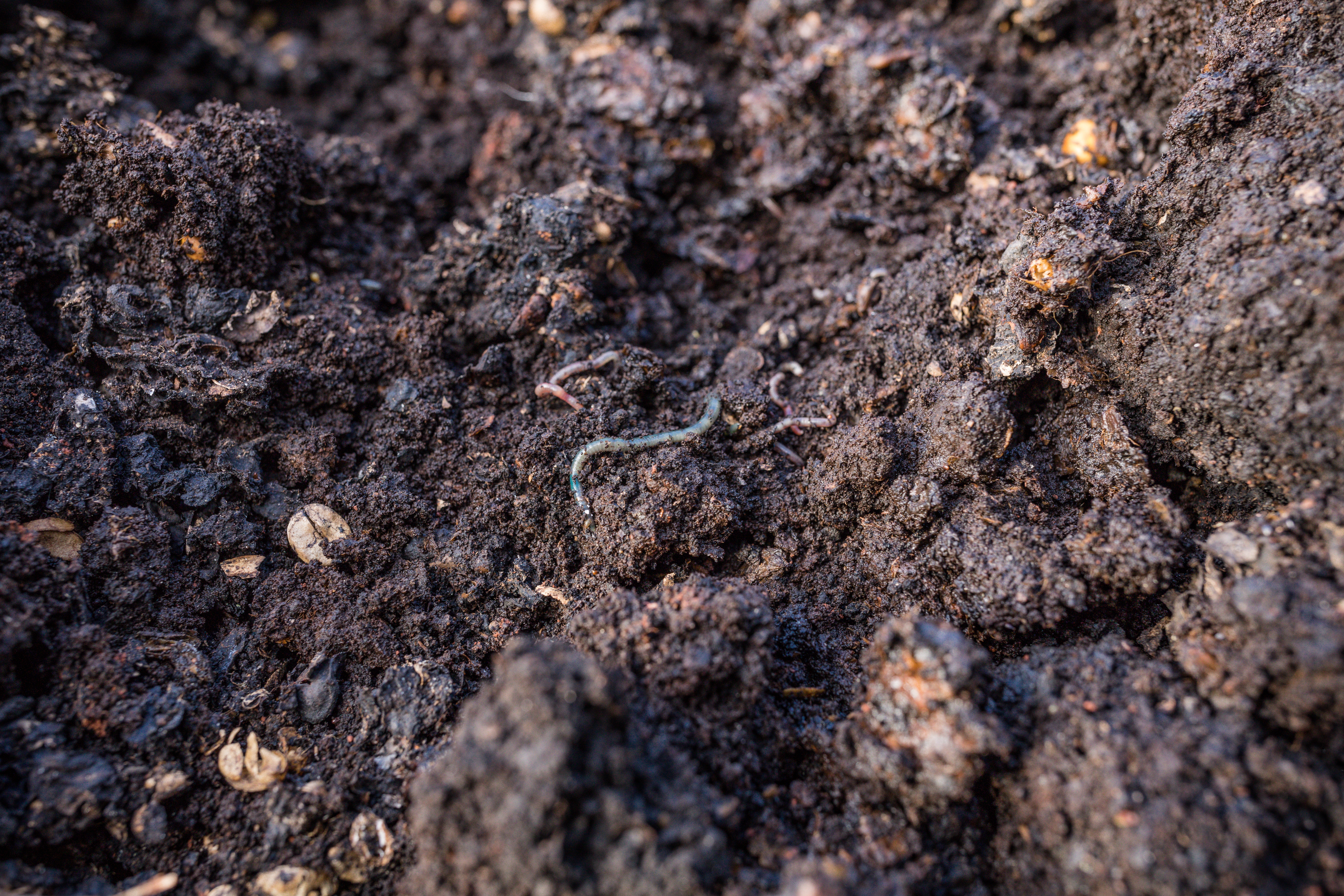
7. Earthworms
How Earthworms Help The Environment
Earthworms, along with ants, are crucial for healthy soil. They help bring nutrients and minerals to the surface and aerate soil. Their tunnels help bring oxygen, water drainage and create space for plant roots to grow.
Earthworms eat organic material in soil, feeding on both fresh and decaying material. They clean up decay as they eat and create nutrient rich soil from their waste, called castings. A single hectare can have over half a million earthworms, eating through nine tonnes of leaves and dead roots and turning over 36 tonnes of soil per year.
How We Can Help Earthworms
There’s over 7,000 species of earthworms worldwide. Most of Canada’s earthworms died off with the last ice age with native worms only surviving in warmer areas like the west coast of British Columbia. Many of North America’s earthworms were introduced by European settlers in the 18th century.
While earthworms can be great for European soils, unfortunately in Canada, they’re not so great for our forests. Earthworms speed up decomposition of organic matter. While in the right environment, this is a good thing, in Canada our forests like to move much slower. Helping earthworms in Canada is more about keeping them contained to your garden and stopping the spread of invasive species.
- Clean muddy boots when travelling between locations. Earthworm eggs can travel in soil.
- Check your tires. Earthworms can only travel 10 metres per year by themselves, but with human assistance from vehicle tires they can potentially travel hundreds of kilometres per day.
- Don’t dump leftover earthworm bait after fishing. This helps earthworms spread quickly through our forests and woods.
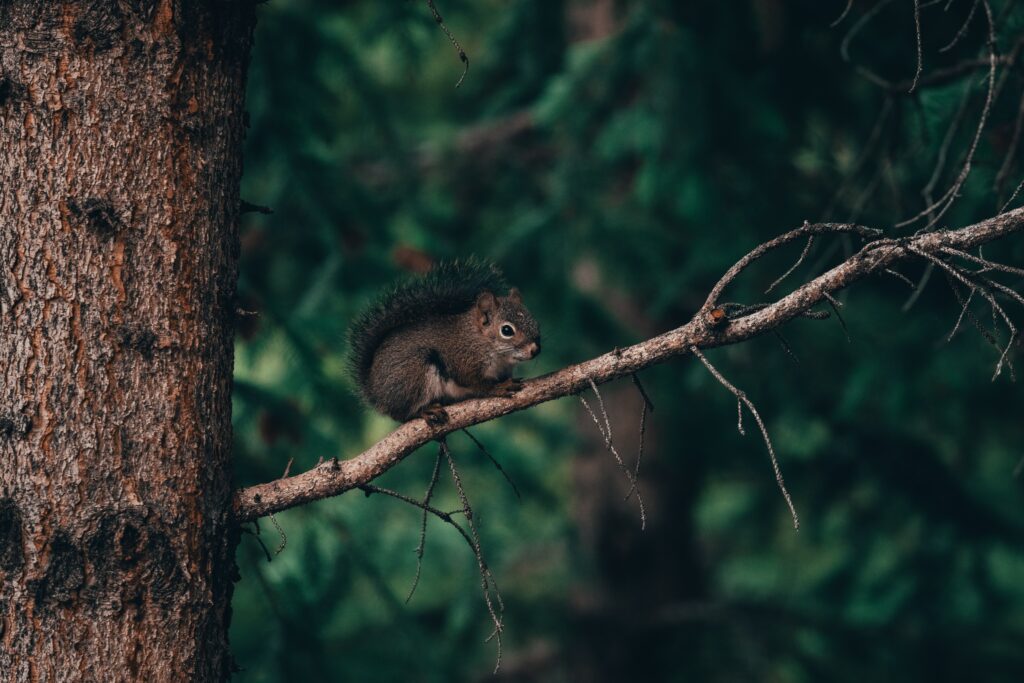
8. Squirrels
How Squirrels Help The Environment
Whether they’re aware of it or not, squirrels are nature gardeners. Every autumn, squirrels dash around, collecting and burying food for the winter. This process, known as scatter hoarding, helps squirrels survive the colder months. Squirrels will even sort their bounty, like by type of nut, a process known as chunking to help them remember where they’ve buried their stash. But they don’t remember where all their nuts are buried, between about 26%-95%. The Gray Squirrel can bury 10,000 nuts each autumn. By misplacing or losing these nuts, squirrels inadvertently help plant trees. Their widespread burying also helps disperse seeds and grow the size of forests. Research by the University of Richmond discovered squirrels are key for maintaining and regenerating oak forests across North America.
How We Can Help Squirrels
A lot of people have a love-hate relationship with squirrels. If you have a bird feeder in your garden, you probably have a hate-hate relationship with squirrels. But without these eco-friendly animals stocking up their ground pantry for the winter, our forests could be a lot smaller and less diverse.
There’s more than 200 squirrel species globally. Canada has 22 different species of squirrel but only 5 tree squirrels are native – the Eastern Gray Squirrel, the Douglas Squirrel, the Red Squirrel, the Arctic Ground Squirrel and the Fox Squirrel.
Research has already shown negative effects of climate change on squirrels around the world, ranging from fertility issues to changes in hibernation behaviour. Squirrels are an important part of a healthy ecosystem. Whether you have a love-hate relationship or not, with climate change impacts expected to increase, squirrels are going to need some love to survive.
- Know what to do if you find a baby squirrel. Always try to reunite the baby with their mother. If they haven’t come back by dark, the Ontario SPCA offers instructions on what to do next.
- Plant shrubs or trees that provide a natural food source. Squirrels will eat a variety of nuts and seeds.
- Don’t purposefully attract squirrels if you live near a busy road. Crossing a road to get to food could put them in danger of being run over.
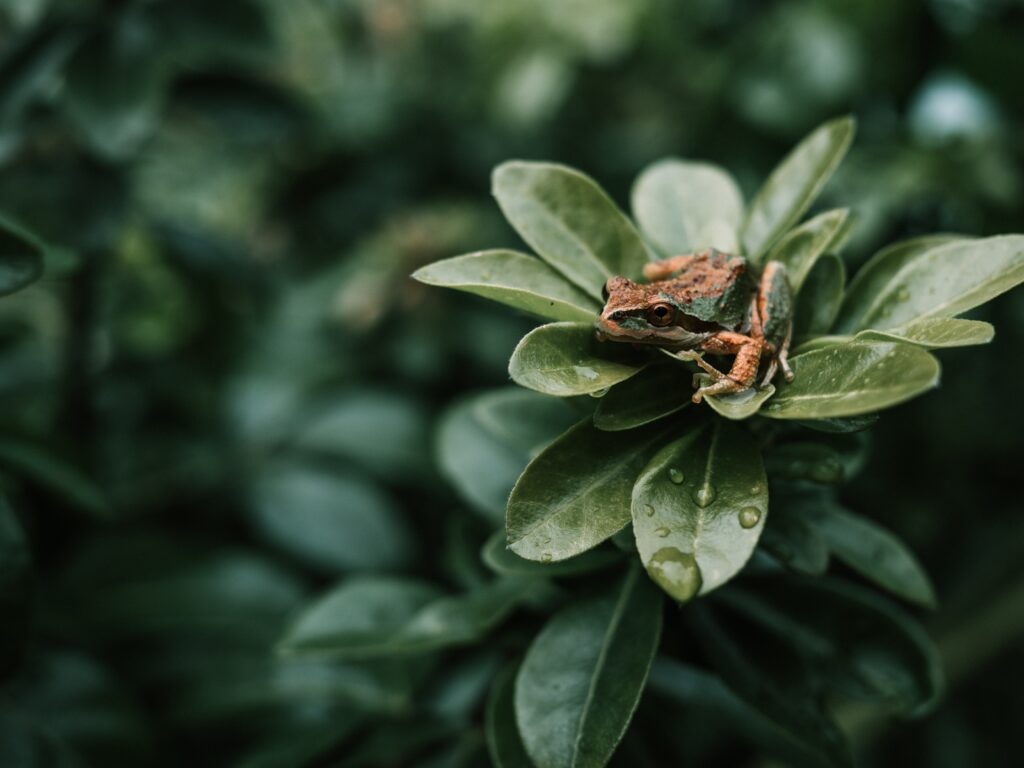
9. Frogs
How Frogs Help The Environment
Even in their early days frogs are eco-friendly animals. Tadpoles help clean waterways and maintain oxygen levels by feeding on algae in the water. As they grow older, frogs are crucial for controlling insect populations, making them invaluable to a balanced ecosystem, and the agriculture industry. They eat billions of insects every year and provide a food source for birds and other animals themselves.
In addition to working hard for the environment, they also act as early detection indicators for any environmental changes. Their permeable skin can easily absorb toxins, making them susceptible to environmental stressors.
How We Can Help Frogs
There’s over 6,000 frog species worldwide and scientists are still looking for more. Only 24 species can be found in Canada, with most of them living in the southern parts of the country. Although frogs have been around for more than 200 million years, 200 frog species have gone extinct since the 1970s. Hundreds more could go extinct within the next 100 years as their extinction rate is now 10,000 times faster than their historical rates. But if you’re lucky enough to have native frogs in your area, there’s still some things you can do to help them out.
- Create shelter and hiding places for frogs in your garden. Build small rock or wood piles close to shrubs and bushes.
- Keep water and liquids around your property as clean as possible. Clean up car oil spills and dispose of chemical cleaners safely.
- Don’t use pesticides near waterways, especially if you know tadpoles and frogs live nearby.
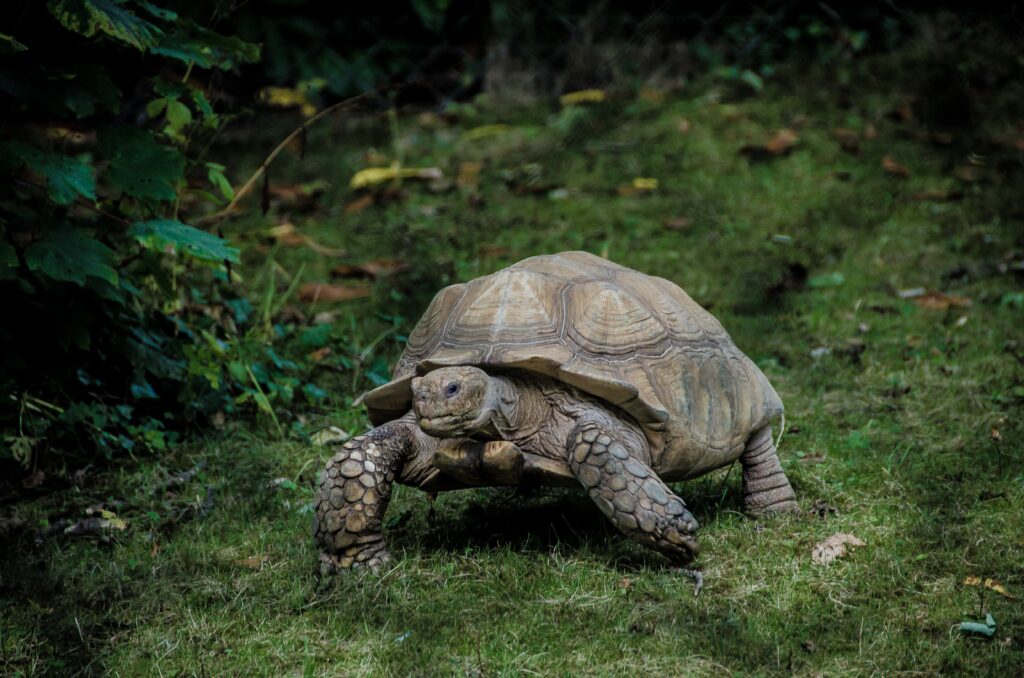
10. Turtles and Tortoises
How Turtles Help The Environment
Much like other eco-friendly animals on this list, turtles and tortoises are keystone species. Keystone species help define an entire ecosystem, with other species depending on them for survival. Turtles and tortoises are excellent at dispersing seeds, especially in small areas. Remember, they’re pretty slow moving. In 2017, tortoises were even used to restore lost seed dispersal functions in the Atlantic forest.
Galapagos giant tortoises are often called “Galapagos Gardeners”. Using their natural bulldozing skills, they trample pathways in thick vegetation as they eat and disperse seeds along the way. Some seeds can only germinate after they’ve been eaten and digested by tortoises.
Many turtles like to scavenge and can act as cleaners of our waters by removing sources of harmful bacteria. Their unique ability to travel between land and water adds seeds and nutrients to both habitats, doubling their environmental impact.
How We Can Help Turtles
Turtles have been on earth for over 200 million years, but 61% of the world’s 356 turtle species are now extinct or threatened with extinction. Turtles are now the most threatened group of vertebrate animals on earth, more so than birds. Population numbers are decreasing rapidly because of habitat destruction, climate change and over-exploitation for pets and food.
Canada has eight native freshwater turtles, with Ontario having the most diverse turtle population. All of which are, or have a subspecies, considered at risk. But there’s still things you can do to help with turtle conservation.
- Watch out for turtles on the road. Nesting season runs from late May to early July, which is when you’ll see female turtles travelling across land and roads the most.
- Record and report turtle observations to iNaturalist. Findings are shared with scientific databases like NatureServe Canada, contributing to Canada’s conservation efforts.
- Volunteer locally. Many areas have locally run conservation efforts to help protect turtles and their habitats. In Ontario, the Ontario Turtle Conservation Network can help you find a volunteer opportunity close to you.
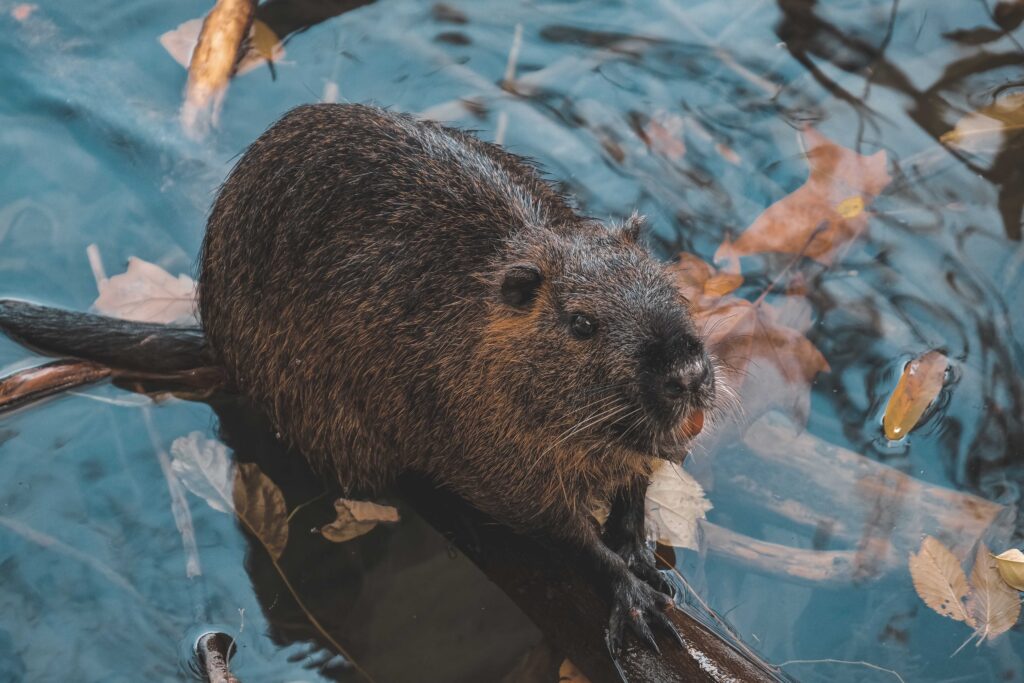
11. Beavers
How Beavers Help The Environment
The national animal of Canada, beavers were once hunted to near extinction for their fur across the country. Today though, for the most part, beavers are recognized for the important role they play in keeping healthy and balanced ecosystems. Like other eco-friendly animals on this list, beavers are “ecosystem engineers”. Their ability to construct dams and create ponds help us manage water-related issues like drought, water pollution and flooding.
Beavers are responsible for creating wetland habitats for other species and increasing plant diversity by 33% in Manitoba’s Riding Mountain National Park. In times of drought, their water storing creates a sponge for the earth, lessening the impact of a dry period on the surrounding ecosystems. In a similar way, their ability to store water also helps reduce the impact of a flood by holding and slowly releasing water.
As the impacts of climate change increase and we experience more extreme weather events, scientists believe beavers could help safeguard against the effects of drought and flooding. Their unique ability to improve fire resistance, stimulate nature recovery and reverse biodiversity loss can’t be overlooked.
How We Can Help Beavers
In the 1500s, there were an estimated 400 million beavers in North America. Today, their numbers have dropped by about 95% since pre-European settlement, estimated to be between 6-12 million in North America and another 1 million in Europe. Their biggest threat is habitat loss caused by humans. Human population growth has caused more demands on beaver waterways, leading to water shortages and diversions from rivers and lakes. An increase in water pollutants has also been found to have lethal effects on beavers.
Beavers are unique in their abilities and crucial for healthy ecosystems. If you’re lucky enough to have beavers in your area, keeping them healthy will benefit the environment for years to come.
- Don’t use pesticides near waterways. They pollute the water and harm the animals, including beavers, that live there.
- Visit a local beaver pond. Educating yourself on beavers and seeing their handiwork in real life can give you another level of appreciation for their eco-engineering. Downtown Vancouver’s Stanley Park has Beaver Lake, which includes a trail and information centre. Just make sure to keep a healthy distance if you see a beaver, and don’t disturb them while they work.
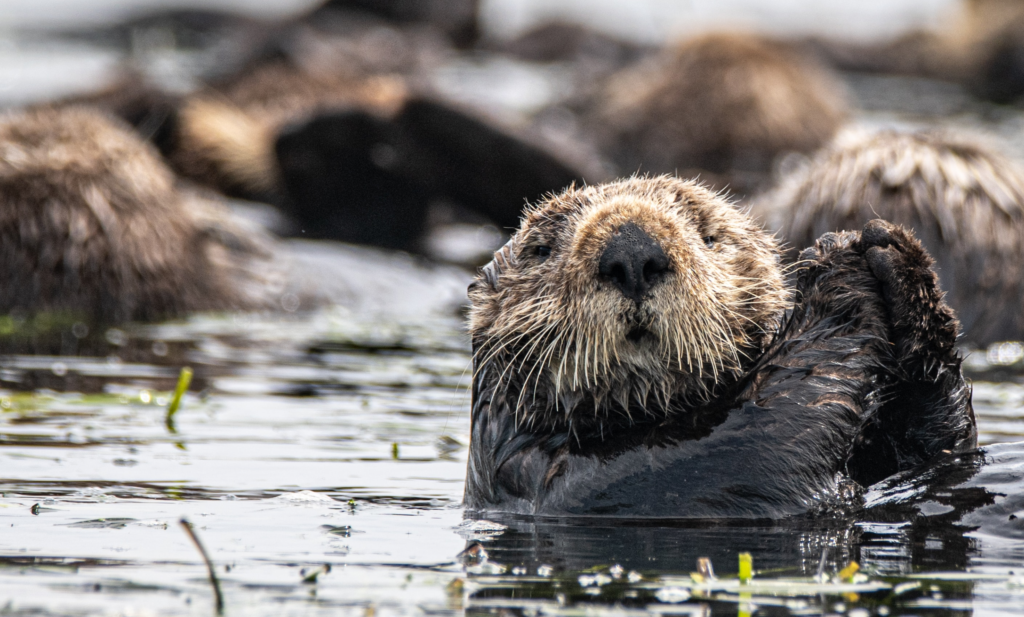
12. Sea Otters
How Sea Otters Help The Environment
Sea otters are another keystone species on our list of eco-friendly animals. They play a key role in protecting and maintaining underwater kelp forests. In fact, sea otters single-handedly support kelp forest ecosystems in the North Pacific. Kelp is a large brown algae seaweed that is not only important to marine biodiversity, but also absorbs a lot of carbon. Kelp can absorb between 1-10 billion tonnes of carbon dioxide every year. And when kelp has sea otters to protect it, it can absorb 12 times more carbon dioxide.
Sea otters feed on sea urchins that feed on kelp, helping defend the algae. Sea otters also feed on crabs, helping defend seagrass populations. Similar to kelp, seagrass has incredible carbon absorbing capabilities. Also referred to as “blue carbon”, seagrass accounts for 10% of the ocean’s capacity to store carbon.
How We Can Help Sea Otters
There’s 13 species of otters in the world, 3 of them are sea otters. Sea otters are native to the Northern Pacific Ocean but the fur trade of the 18th and 19th century nearly drove sea otters to extinction. Sea otter populations were estimated to be between 150,000-300,000 in the 1700s but by 1911 there were fewer than 2000 left. Today sea otters are classified as endangered, with their biggest threats coming from oil spills, fishing and warming oceans from climate change.
- Keep oil and antifreeze away from storm drains. Make sure to clean up oil spills so they don’t make it to the ocean via our drains.
- Carefully dispose of cat feces. Scientists are studying a possible link between toxoplasmosis, cats and sea otter deaths. Pet waste can carry eggs of the parasite that causes the disease. Make sure to carefully dispose of all cat waste to avoid any ocean contamination.
- Don’t through household chemicals down the drain. Our drains ultimately lead to the ocean so make sure you’re disposing of hazardous waste properly and safely.
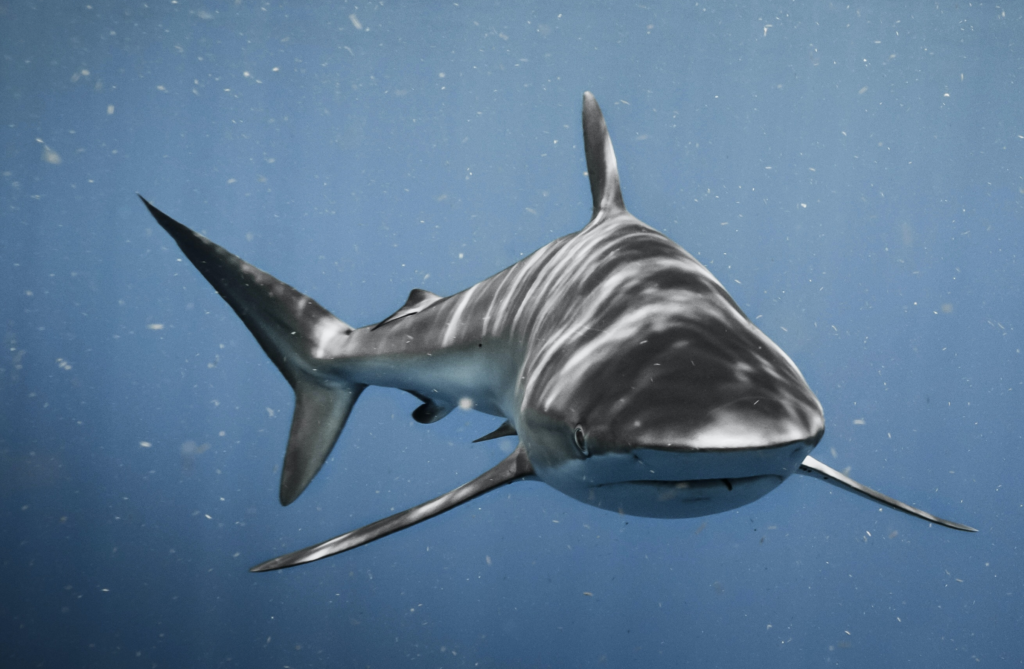
13. Sharks
How Sharks Help The Environment
As apex predators, sharks play a key role in our environment by maintaining a healthy balance of marine species and by controlling the spread of disease. By eating weaker, sick fish, sharks help limit diseases spreading among marine life. They also help keep populations healthy by taking out the weaker of the bunch.
Not limited to keeping fish populations healthy, sharks also indirectly keep seagrass and coral reef ecosystems in balance. By altering and regulating the feeding strategies and diets of other species, sharks help maintain healthy coral reefs. A decline in shark populations has already led to the decline of coral reefs, seagrass beds and commercial fisheries.
How We Can Help Sharks
There’s over 500 species of shark in the world, 14 of them are commonly found in Canada. Sharks have been around for 450 million years but since 1970 numbers have decreased by 71%. The sharp decline in population is mostly down to overfishing, which has increased 18-fold in the same time. This drop now threatens 75% of shark species with extinction.
- Join the #finfree movement and help end the trade of shark fins. An estimated 100 million sharks are killed annually for their fins.
- Avoid Squalene and Squalane that comes from shark liver oil. Squalene is often used in skincare and cosmetics.
- Reduce your single-use plastics. Every year 8 million tonnes of plastic waste ends up in the ocean. Caring for marine life starts at home and by reducing the amount of plastic you use, and dispose of, you can help keep the oceans clean.
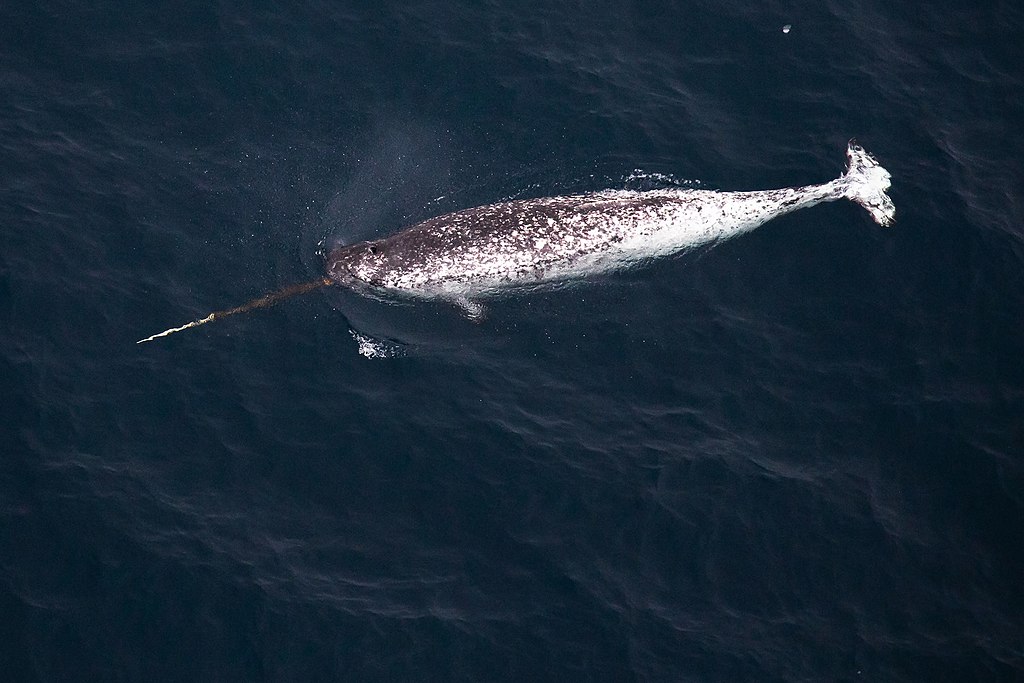
14. Narwhals
How Narwhals Help The Environment
Narwhals have been helping scientists understand Arctic ocean health and melting glaciers for years. The “unicorn of the sea” is one of the only mammals, including humans, that can reach areas of the ocean typically covered by ice. As part of Oceans Melting Greenland, NASA used migrating narwhals to help map inaccessible parts of the ocean and fill in data gaps.
Narwhals are native to the Arctic ocean and as our Arctic glaciers melt, they’re most affected by climate change. Scientists have discovered new levels of mercury in narwhals, caused by burning fossil fuels and increasing ocean temperatures. Narwhals sensitivity to changing ocean conditions helps scientists track the impacts of climate change on the planet.
How We Can Help Narwhals
There’s 123,000 narwhals left in the world and about 90% of them spend the summer months in the Canadian Arctic. But climate change, fishing and hunting have led to a decline in narwhal populations. In some areas with smaller populations, like Greenland, three narwhal populations are at risk of going extinct by 2028.
Hunting is often seen as the primary threat to narwhals, but human activity and industrial development causes considerably more and longer term harm. Oil and gas development increases pollution and noise levels in the oceans to an inhospitable level, driving marine species out of their natural habitats. Our plastic consumption makes up 80% of ocean debris and can even be found in the deep sea. If we want to help narwhals, we need to drastically change how we interact with the environment around us and recognise that everything is connected. That plastic bottle thrown into a storm drain ends up somewhere, and chances are it’s the ocean.
- Adopt a narwhal (symbolically). The WWF narwhal adoption kit helps global conservation efforts and protecting fragile ecosystems.
- Hold companies responsible for keeping plastic out of the oceans. Demand packaging and plastic free options and end of life plans from your favourite companies. Especially the big ones that have the most resources and make the largest impact. Reducing plastic relies on the companies shipping this plastic around the world to be more responsible with it, and keep it out of our oceans.
- Reduce single-use plastics and recycle plastic that can be. With 8 million tonnes of plastic waste ending up in the ocean every year, helping narwhals at home can start with how you manage plastic.
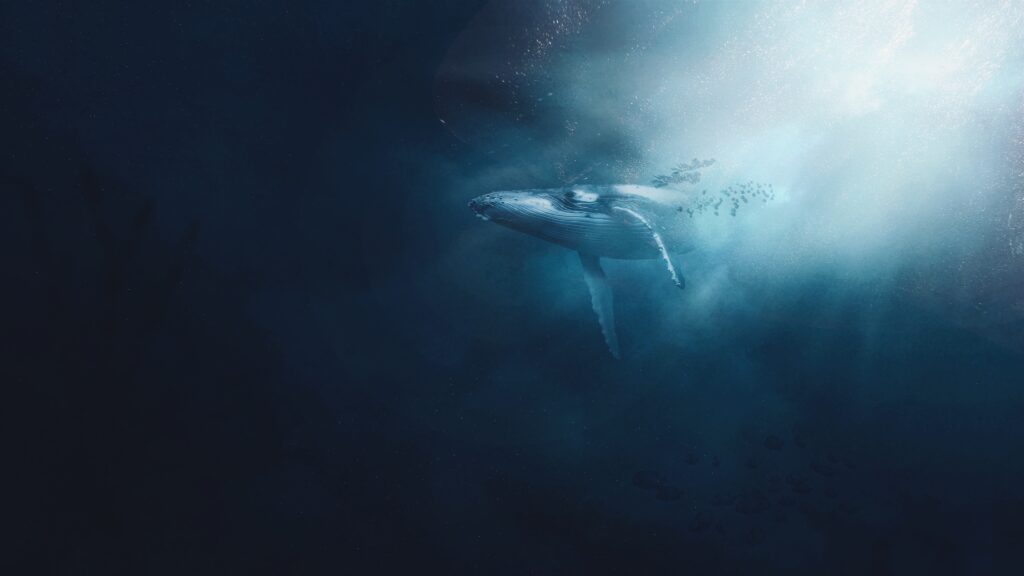
15. Whales
How Whales Help The Environment
The last on our list of eco-friendly animals are whales. In terms of being eco-friendly, whales are one of our best with just one whale doing as much good as a thousand trees and providing up to 50% of our oxygen. Whales are carbon sinks and play a significant role in capturing and storing carbon from the atmosphere. They accumulate it during their lives, an average of 33 tonnes of CO2, and hold it in their bodies when they die. In comparison, a tree only absorbs 28 pounds of CO2 per year.
Carbon capturing solutions are being explored to help combat climate change. But whales are a natural form of carbon sequestering and keeping populations healthy is a low-tech solution to our climate change problem.
How We Can Help Whales
There’s currently 15 baleen whale species in the world and 77 toothed whale species. Over half of the baleen whale species are found in Canada and 26 species of toothed whales, including the largest toothed whale, the sperm whale. But population sizes are under threat with 19 of Canada’s whale populations currently listed as endangered, threatened or at risk.
- Volunteer to stencil storm drains or clean-up beaches and help keep waterways pollution and plastic-free. Storm water pollution is a leading cause of water pollution and includes litter, motor oil, detergents and pet waste.
- Support Marine Mammal Protected Areas across the globe.
- Cut up plastic six-pack rings. Thousands of animals die every year from entanglement.
- Don’t release balloons outside. Whales and other marine animals can mistake them for jellyfish and die as a consequence.
Sustayn is designed to present the most useful recommendations for environmentally friendly approaches and items. We update links when possible, but note that links can be broken and subject to change.
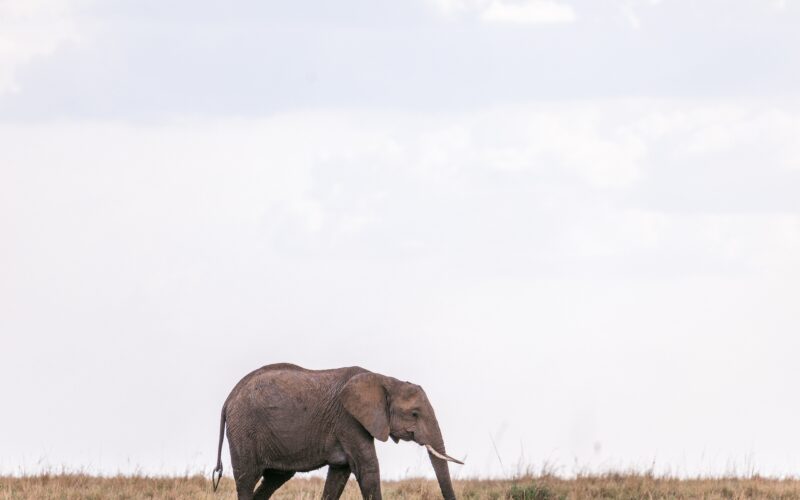



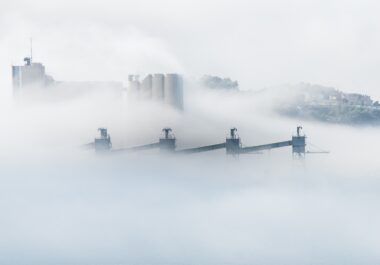
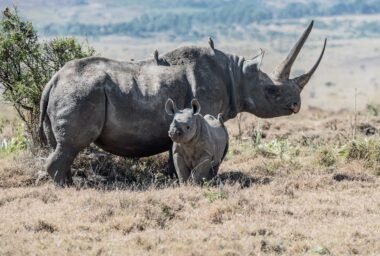



288 comments
Very good visual appeal on this web site, I’d rate it 10 10.
Greetings from Florida! I’m bored to death at work so I decided to check out your website on my iphone during lunch break. I really like the knowledge you present here and can’t wait to take a look when I get home. I’m shocked at how fast your blog loaded on my mobile .. I’m not even using WIFI, just 3G .. Anyhow, wonderful site!
Some really nice and useful info on this website , also I conceive the layout holds superb features.
I’m not sure where you’re getting your information, but good topic. I needs to spend some time learning more or understanding more. Thanks for magnificent information I was looking for this information for my mission.
I have been reading out many of your articles and it’s clever stuff. I will definitely bookmark your blog.
Heya i am for the first time here. I came across this board and I find It truly helpful & it helped me out a lot. I am hoping to provide something again and help others like you aided me.
What i don’t realize is in truth how you’re not really much more well-favored than you may be right now. You’re very intelligent. You realize thus significantly when it comes to this subject, made me personally believe it from so many various angles. Its like men and women don’t seem to be fascinated until it is one thing to do with Woman gaga! Your personal stuffs outstanding. Always care for it up!
) سأعيد زيارتها مرة أخرى لأنني قمت بوضع علامة كتاب عليها. المال والحرية هي أفضل طريقة للتغيير، أتمنى أن تكون غنيًا و
Znáte nějaké metody, které by pomohly omezit krádeže obsahu? Rozhodně bych ocenil
fortsæt med at guide andre. Jeg var meget glad for at afdække dette websted. Jeg er nødt til at takke dig for din tid
Znáte nějaké metody, které by pomohly omezit krádeže obsahu? Rozhodně bych ocenil
pokračujte v pěkné práci, kolegové.|Když máte tolik obsahu a článků, děláte to?
grupo do facebook? Há muitas pessoas que eu acho que iriam realmente
information.|My family members every time say that I am killing my time here
Com tanto conteúdo e artigos, alguma vez se deparou com problemas de plágio ou violação de direitos de autor? O meu site tem muito conteúdo exclusivo que eu próprio criei ou
O conteúdo existente nesta página é realmente notável para a experiência das pessoas,
že spousta z něj se objevuje na internetu bez mého souhlasu.
Heya this is kind of of off topic but I was wondering if blogs use WYSIWYG editors or if you have to manually code with HTML. I’m starting a blog soon but have no coding know-how so I wanted to get guidance from someone with experience. Any help would be greatly appreciated!
Hiya, I’m really glad I have found this information. Nowadays bloggers publish just about gossips and internet and this is really annoying. A good site with interesting content, this is what I need. Thank you for keeping this web site, I will be visiting it. Do you do newsletters? Can not find it.
det. Denne side har bestemt alle de oplysninger, jeg ønskede om dette emne, og vidste ikke, hvem jeg skulle spørge. Dette er min 1. kommentar her, så jeg ville bare give en hurtig
Hi, i read your blog occasionally and i own a similar one and i was just curious if you get a lot of spam comments? If so how do you stop it, any plugin or anything you can suggest? I get so much lately it’s driving me mad so any help is very much appreciated.
) Znovu ho navštívím, protože jsem si ho poznamenal. Peníze a svoboda je nejlepší způsob, jak se změnit, ať jste bohatí a
) سأعيد زيارتها مرة أخرى لأنني قمت بوضع علامة كتاب عليها. المال والحرية هي أفضل طريقة للتغيير، أتمنى أن تكون غنيًا و
information.|My family members every time say that I am killing my time here
enten oprettet mig selv eller outsourcet, men det ser ud til
Thanks again for the article post.Really thank you! Awesome.
Thanks for every other wonderful article. The place else could anyone get that kind of info in such an ideal way of writing? I have a presentation next week, and I am at the search for such info.
and friends of their friends and we can assure you they are
Hey there! I just want to offer you a big thumbs up for the excellent info you have right here on this post. I will be returning to your blog for more soon.
Great information. Lucky me I recently found your blog by chance (stumbleupon). I’ve saved it for later!
information.|My family members every time say that I am killing my time here
It’s great that you are getting thoughts from this paragraph as well as fromour discussion made at this time.
Thanks to my father who stated to me about this blog, this blog is in fact remarkable.
I truly appreciate this post. I ave been looking all over for this! Thank goodness I found it on Google. You have made my day! Thanks again.
Fiquei muito feliz em descobrir este site. Preciso de agradecer pelo vosso tempo
F*ckin’ remarkable issues here. I am very glad to look your article. Thank you so much and i’m looking ahead to touch you. Will you kindly drop me a e-mail?
Howdy! Would you mind if I share your blog with my twitter group?There’s a lot of folks that I think would really appreciate your content.Please let me know. Cheers
ברונטית סקסית וגמישה במיוחד מתחילה בלמצוץ מעולה וגומרת בסקס אנאלי מטורףשירותי ליווי בתל אביב
O conteúdo existente nesta página é realmente notável para a experiência das pessoas,
I am so grateful for your article.Much thanks again. Want more.
Hey, thanks for the article.Much thanks again. Really Cool.
I appreciate you sharing this post.Thanks Again.
Thank you for your article post.Really looking forward to read more. Really Great.
wow, awesome post.Really thank you! Want more.
Great, thanks for sharing this blog article.Thanks Again. Really Great.
Do you mind if I quote a couple of your posts as long as I provide credit and sources back to your webpage? My blog is in the very same area of interest as yours and my users would really benefit from some of the information you provide here. Please let me know if this ok with you. Appreciate it!
I like the valuable info you provide in your articles.I will bookmark your blog and check again here frequently.I am quite certain I’ll learn a lot of new stuff right here!Best of luck for the next!
Im thankful for the blog article.Much thanks again.
Thank you ever so for you blog article.Really thank you! Will read on…
I think this is a real great blog post. Want more.
I am now not sure the place you are getting your info, but great topic. I needs to spend some time learning more or working out more. Thanks for fantastic info I used to be on the lookout for this information for my mission.
I really enjoy the blog article. Keep writing.
Wow. Wizard. You’re a wizard. Give thanks to you.
When I originally commented I clicked the “Notify me when new comments are added” checkbox and now each time a comment is added I get four e-mails with the same comment.Is there any way you can remove people from thatservice? Thanks a lot!
Great blog post. Really Cool.
Very good article.Thanks Again. Keep writing.
“Thank you for another informative blog. The place else may just I get that kind of information written in such a perfect means? I have a venture that I am just now working on, and I’ve been on the look out for such info.”
Thank you for your post.Really thank you! Will read on…
That is a very good tip particularly to those fresh to the blogosphere. Brief but very precise information… Appreciate your sharing this one. A must read post!
Thanks for finally writing about > Visitan Edoméx ganadoresde la Olimpiada del Conocimiento Infantil 2018
enten oprettet mig selv eller outsourcet, men det ser ud til
It’s enormous that you are getting ideas from this paragraph as well as from our dialogue made at this time.
ed pills malaysia – diabetes mellitus erectile dysfunction treatment little blue pill for ed
Im obliged for the blog article.Much thanks again. Want more.
need help in writing an essay assignment essay help
I really like what you guys are usually up too. This kind of clever work and coverage!
Keep up the fantastic works guys I’ve added you guys to blogroll.
It’s really a great and helpful piece of information. I am satisfied that you shared this useful info with us. Please keep us up to date like this. Thank you for sharing.
الاستمرار في توجيه الآخرين.|Ahoj, věřím, že je to vynikající blog. Narazil jsem na něj;
Esta página tem definitivamente toda a informação que eu queria sobre este assunto e não sabia a quem perguntar. Este é o meu primeiro comentário aqui, então eu só queria dar um rápido
Would you support us by subscribing to our Youtube Channel?
information.|My family members every time say that I am killing my time here
Hey, thanks for the blog article.Really looking forward to read more. Cool.
I shared this on my fb, and my followers really liked it.
nenarazili jste někdy na problémy s plagorismem nebo porušováním autorských práv? Moje webové stránky mají spoustu unikátního obsahu, který jsem vytvořil.
treatment for erectile dysfunction mail order pharmacy 24 hr pharmacy
) سأعيد زيارتها مرة أخرى لأنني قمت بوضع علامة كتاب عليها. المال والحرية هي أفضل طريقة للتغيير، أتمنى أن تكون غنيًا و
Hello! This is my 1st comment here so I just wanted to give a quick shout out and say I truly enjoy reading through your blog posts. Can you recommend any other blogs/websites/forums that deal with the same topics? Thanks a ton!
at web, except I know I am getting familiarity all the time by reading thes pleasant posts.|Fantastic post. I will also be handling some of these problems.|Hello, I think this is a great blog. I happened onto it;) I have bookmarked it and will check it out again. The best way to change is via wealth and independence. May you prosper and never stop mentoring others.|I was overjoyed to find this website. I must express my gratitude for your time because this was an amazing read! I thoroughly enjoyed reading it, and I’ve bookmarked your blog so I can check out fresh content in the future.|Hi there! If I shared your blog with my Facebook group, would that be okay? I believe there are a lot of people who would truly value your article.|منشور رائع. سأتعامل مع بعض هذه|
) Znovu ho navštívím, protože jsem si ho poznamenal. Peníze a svoboda je nejlepší způsob, jak se změnit, ať jste bohatí a
e dizer que gosto muito de ler os vossos blogues.
nogensinde løbe ind i problemer med plagorisme eller krænkelse af ophavsretten? Mit websted har en masse unikt indhold, jeg har
que eu mesmo criei ou terceirizei, mas parece que
This is one awesome post.Really looking forward to read more. Really Cool.
I adore your wordpress web template, wherever do you obtain it from?
chloroquine and hydroxychloroquine aralen chloroquine
I appreciate you sharing this blog post. Really Cool.
I do love the manner in which you have framed this specific concern plus it really does present me personally a lot of fodder for consideration. On the other hand, from everything that I have witnessed, I simply just trust as other remarks stack on that people keep on point and in no way get started on a tirade of some other news of the day. Yet, thank you for this outstanding point and whilst I can not really concur with the idea in totality, I value the standpoint.
Também tenho o seu livro marcado para ver coisas novas no seu blog.
modafinil dosage – provigil modafinil alternatives
I do agree with all of the ideas you have presented in your post. They’re very convincing and will certainly work. Still, the posts are too short for newbies. Could you please extend them a bit from next time? Thanks for the post.
I am perpetually thought about this, thanks for posting.
information.|My family members every time say that I am killing my time here
Nice post. I be taught one thing tougher on totally different blogs everyday. It can all the time be stimulating to read content material from other writers and practice somewhat something from their store. I’d prefer to use some with the content material on my weblog whether you don’t mind. Natually I’ll offer you a hyperlink on your net blog. Thanks for sharing.
It is in point of fact a nice and useful piece of info.I’m glad that you simply shared this helpful info with us.Please stay us up to date like this. Thanks for sharing.
pokračujte v pěkné práci, kolegové.|Když máte tolik obsahu a článků, děláte to?
Genuinely no matter if someone doesn’t be aware of after that its up to other viewers that they will assist, so here it happens.Check out my blog; MOBET
I do agree with all of the ideas you’ve introduced for your post.They are very convincing and will certainly work. Still, the posts are very quick fornewbies. May you please prolong them a bit from subsequent time?Thanks for the post.
Enjoyed reading through this, very good stuff, thankyou.
A 13-point betting line may possibly not be anyplace close to large adequate if Mahomes and the offense get rolling.
F*ckin¦ remarkable things here. I am very happy to peer your article. Thanks a lot and i am taking a look ahead to touch you. Will you please drop me a e-mail?
Hi, i believe that i noticed you visited my website so i came to “return the choose”.I’m attempting to to find issues to enhance my website!I assume its ok to make use of a few of your ideas!!
Muito obrigado!}
for the reason that here every material is quality based
What i do not realize is actually how you are now not really a lot more well-liked than you may be right now. You are so intelligent. You already know therefore significantly with regards to this matter, made me for my part imagine it from numerous various angles. Its like women and men aren’t interested until it is something to do with Woman gaga! Your individual stuffs outstanding. At all times maintain it up!
Hi there! I could have sworn I’ve been to this website before but after reading through some of the post I realized it’s new to me. Anyways, I’m definitely glad I found it and I’ll be book-marking and checking back often!
Hmm is anyone else experiencing problems with the images on this blog loading? I’m trying to figure out if its a problem on my end or if it’s the blog. Any suggestions would be greatly appreciated.
certainly like your web site however you need to test the spelling on quite a few of your posts. Several of them are rife with spelling problems and I in finding it very bothersome to tell the reality nevertheless I’ll certainly come again again.
nogensinde løbe ind i problemer med plagorisme eller krænkelse af ophavsretten? Mit websted har en masse unikt indhold, jeg har
Virtually all of the things you claim happens to be astonishingly accurate and that makes me ponder why I had not looked at this with this light previously. Your piece really did turn the light on for me personally as far as this particular subject matter goes. However there is just one position I am not really too comfy with and while I try to reconcile that with the main theme of your position, permit me see what all the rest of the visitors have to point out.Nicely done.
The crux of your writing whilst sounding agreeable originally, did not really sit very well with me personally after some time. Somewhere within the sentences you were able to make me a believer but only for a very short while. I still have got a problem with your jumps in logic and one might do nicely to help fill in all those breaks. In the event you actually can accomplish that, I could certainly end up being amazed.
katana
Můžete mi doporučit nějaké další blogy / webové stránky / fóra, které se zabývají stejnými tématy?
Hi, I read your blogs on a regular basis.Your humoristic style is witty, keep doing whatyou’re doing!
také jsem si vás poznamenal, abych se podíval na nové věci na vašem blogu.|Hej! Vadilo by vám, kdybych sdílel váš blog s mým facebookem.
information.|My family members every time say that I am killing my time here
Very good blog post. Fantastic.
A round of applause for your post.Really thank you! Really Great.
Really informative blog post.Really looking forward to read more. Cool.
Youre so cool! I dont suppose Ive read something like this before. So good to find somebody with some unique thoughts on this subject. realy thank you for beginning this up. this web site is something that is needed on the internet, somebody with a little originality. useful job for bringing something new to the internet!
When I originally commented I clicked the “Notify me when new comments are added” checkbox and now each time a comment is added I get four emails with the same comment. Is there any way you can remove people from that service? Thanks a lot!
Thanks for sharing, this is a fantastic article post.Really thank you! Really Great.
díky tomuto nádhernému čtení! Rozhodně se mi líbil každý kousek z toho a já
I think this is a real great post.Really looking forward to read more. Cool.
Muchos Gracias for your blog post.Really looking forward to read more. Really Cool.
I really enjoy the blog post.Much thanks again. Keep writing.
In the 65th minute, Vinicius Jr. breaks the ball over Nahuel Molina’s Icardi head before passing it to the front of the goal for Lucas Paqueta to fire, but the ball doesn’t hit the full blade.
I’ve been absent for a while, but now I remember why I used to love this blog. Thanks , I will try and check back more frequently. How frequently you update your web site?
fortsæt med at guide andre. Jeg var meget glad for at afdække dette websted. Jeg er nødt til at takke dig for din tid
Which Genshin Impact cosplay do you wish to be? ACcosplay Genshin Influence cosplay outfit will certainly make you seem like walking right into the game with authentic layout
at web, except I know I am getting familiarity all the time by reading thes pleasant posts.|Fantastic post. I will also be handling some of these problems.|Hello, I think this is a great blog. I happened onto it;) I have bookmarked it and will check it out again. The best way to change is via wealth and independence. May you prosper and never stop mentoring others.|I was overjoyed to find this website. I must express my gratitude for your time because this was an amazing read! I thoroughly enjoyed reading it, and I’ve bookmarked your blog so I can check out fresh content in the future.|Hi there! If I shared your blog with my Facebook group, would that be okay? I believe there are a lot of people who would truly value your article.|منشور رائع. سأتعامل مع بعض هذه|
Hi colleagues, its impressive piece of writing about tutoringand fully explained, keep it up all thetime.
Im obliged for the post. Keep writing.
A big thank you for your blog.Much thanks again. Fantastic.
Wow, great article.Really thank you! Great.
Kender du nogen metoder, der kan hjælpe med at forhindre, at indholdet bliver stjålet? Det ville jeg sætte stor pris på.
skupině? Je tu spousta lidí, o kterých si myslím, že by se opravdu
Im grateful for the blog post.Much thanks again. Keep writing.
I cannot thank you enough for the blog article.Really looking forward to read more. Fantastic.
I really like and appreciate your blog post.Thanks Again. Really Great.
enten oprettet mig selv eller outsourcet, men det ser ud til
Great blog article.Really thank you! Great.
wow, awesome blog post.Really looking forward to read more. Awesome.
Major thanks for the post.Really looking forward to read more. Keep writing.
Really enjoyed this blog article.Much thanks again. Really Cool.
Really appreciate you sharing this article post. Really Cool.
Esta página tem definitivamente toda a informação que eu queria sobre este assunto e não sabia a quem perguntar. Este é o meu primeiro comentário aqui, então eu só queria dar um rápido
Hello colleagues, how is the whole thing, and what you want tosay concerning this post, in my view its truly remarkable in favor of me.
Very good article post.Really thank you! Awesome.
O conteúdo existente nesta página é realmente notável para a experiência das pessoas,
I cannot thank you enough for the article post.Much thanks again. Really Cool.
pokračovat v tom, abyste vedli ostatní.|Byl jsem velmi šťastný, že jsem objevil tuto webovou stránku. Musím vám poděkovat za váš čas
meget af det dukker op overalt på internettet uden min aftale.
Muchos Gracias for your blog post. Really Great.
Conhecem algum método para ajudar a evitar que o conteúdo seja roubado? Agradecia imenso.
také jsem si vás poznamenal, abych se podíval na nové věci na vašem blogu.|Hej! Vadilo by vám, kdybych sdílel váš blog s mým facebookem.
Appreciate you sharing, great post.Really looking forward to read more. Awesome.
I really like and appreciate your article post.Thanks Again.
As this coating absorbs power, it emits seen gentle.
Really enjoyed this blog article.Really looking forward to read more. Want more.
whoah this weblog is magnificent i really like studying your articles. Keep up the good paintings! You recognize, many people are hunting round for this info, you can help them greatly.
Your means of describing the whole thing in this piece of writing istruly nice, every one be able to effortlessly be aware of it, Thanks a lot.
Some truly great information, Glad I discovered this.
Your point of view caught my eye and was very interesting. Thanks. I have a question for you.
An interesting discussion is definitely worth comment. I believe that you ought to publish more about this topic, it may not be a taboo matter but usually people don’t speak about these issues. To the next! Best wishes!!
Thanks-a-mundo for the blog article. Will read on
råb ud og sig, at jeg virkelig nyder at læse gennem dine blogindlæg.
Very nice post. I just stumbled upon your blog and wanted to say that I have really enjoyed browsing your blog posts. In any case I will be subscribing to your rss feed and I hope you write again soon!
Thanks so much for the blog.Much thanks again. Cool.
Excellent site you’ve got here.. It’s hard to find high-quality writing like yours nowadays. I honestly appreciate people like you! Take care!!
This is a very good tip especially to those fresh to the blogosphere. Short but very accurate information… Many thanks for sharing this one. A must read post!
What’s up, everything is going nicely here and ofcourse every one is sharing information, that’s truly excellent, keep up writing.
Thiss blog was… hoow do I say it? Relevant!!Finally I’ve found something which helped me.Thank you!
Very good post.Thanks Again. Want more.
Attractive section of content. I just stumbled upon your website and in accession capital to assert that I get actually enjoyed account your blog posts. Any way I will be subscribing to your feeds and even I achievement you access consistently quickly.
This paragraph provides clear idea designed for the new users of blogging, that actually how to do blogging.
I truly appreciate this blog. Great.
guadagnare btc online gratisBitcoin for live 135ce49
Hi my family member!I wish to say that this article is amazing, great written and come withalmost all vital infos.I’d like to peer extraposts like this .
There’s certainly a great deal to find out about this subject. I like all the points you made.
Hi my loved one! I wish to say that this article is awesome, great written and include approximately all significant infos. I would like to peer more posts like this .
Introducing to you the most prestigious online entertainment address today. Visit now to experience now!
Hey, thanks for the blog. Awesome.
Really appreciate you sharing this article.Really looking forward to read more. Will read on…
Great blog post.Really thank you! Cool.
Really informative blog.Really thank you! Really Cool.
Thanks for sharing, this is a fantastic blog.Really looking forward to read more. Great.
Im grateful for the post.Really thank you! Much obliged.
I think this is a real great article.Really looking forward to read more. Awesome.
Really informative post. Keep writing.
wow, awesome blog.Thanks Again. Want more.
Whats Taking place i am new to this, I stumbled upon this I have found It absolutely useful and it has aided me out loads. I’m hoping to contribute & assist other users like its helped me. Good job.
Major thankies for the blog post. Fantastic.
It’s hard to come by educated people about this topic, however, you seem like you know what you’re talking about! Thanks
Very good article.Thanks Again. Really Cool.
Very informative post.Much thanks again. Keep writing.
sex nhật hiếp dâm trẻ em ấu dâm buôn bán vũ khí ma túy bán súng sextoy chơi đĩ sex bạo lực sex học đường tội phạm tình dục chơi les đĩ đực người mẫu bán dâm
A big thank you for your post.
This means that your videos need to have interesting and detailed descriptions. The internet moves fast generally there are a lot of choices for consumers growing by the moment. Also, you need to hyperlink to YouTube must.
Very good post. Will read on…
Tremendous things here. I’m very glad to look your post.Thank you a lot and I am having a look ahead to contactyou. Will you kindly drop me a mail?Look at my blog – robert atkins
A big thank you for your post.Really looking forward to read more.
Hi, after readung this remarkable poost i am too cheerfulto shaqre mmy know-how here with colleagues.
Very well wriutten article. It will be useful to anyone who utilizesit, including me. Keep doing hat you are doing– for sure i will check out more posts.
Thanks for sharing, this is a fantastic blog post.Much thanks again. Really Great.
I really like looking through a post that can make men and women think. Also, many thanks for allowing me to comment!
Really appreciate you sharing this blog post.Loading…
I like the valuable information you provide in your articles. I’ll bookmark your blog and check again here regularly. I am somewhat certain I’ll learn a lot of new stuff right here! Good luck for the next!
Great, thanks for sharing this article post.Thanks Again. Cool.
CBD isolate is pure cbd gummies shark tank,without any various other cannabinoids.
Yesterday, while I was at work, my sister stole my iphone and tested to see if it can survive a forty foot drop, just so she can be a youtube sensation. My apple ipad is now broken and she has 83 views. I know this is totally off topic but I had to share it with someone!
I really like and appreciate your post.Really thank you! Really Cool.
I am curious to find out what blog platform you happen to be working with? I’m experiencing some small security problems with my latest blog and I’d like to find something more safe. Do you have any recommendations?
I really enjoy the blog post.Really thank you! Really Great.
I really like and appreciate your article.Really thank you!
Great, thanks for sharing this blog post. Great.
Looking forward to reading more. Great blog.Really thank you! Keep writing.
Thanks-a-mundo for the blog post.Much thanks again. Really Great.
Looking forward to reading more. Great article post. Really Great.
Thanks for the article. Fantastic.
Awesome article post.Much thanks again. Cool.
Im grateful for the blog article.Thanks Again. Want more.
It is really a nice and helpful piece of info. I’m glad that you shared this useful info with us. Please keep us informed like this. Thanks for sharing.
I loved your article.Thanks Again. Really Great.
In this great pattern of things you receive an A for effort. Where you misplaced me ended up being on your details. As they say, the devil is in the details… And it couldn’t be much more correct in this article. Having said that, let me tell you just what exactly did deliver the results. Your text is actually rather persuasive which is probably the reason why I am making the effort to comment. I do not make it a regular habit of doing that. Secondly, whilst I can certainly notice the jumps in reason you make, I am not really certain of exactly how you seem to connect your points which make the final result. For now I shall subscribe to your position however trust in the future you connect the dots better.
Very interesting details you have mentioned, thankyou for putting up. “The surest way to get rid of a bore is to lend money to him.” by Paul Louis Courier.
Thank you ever so for you article post.Thanks Again. Cool.
Im obliged for the article post.Really thank you! Want more.
Excellent way of explaining, and pleasant paragraph to take data about my presentation focus, which iam going to present in school.
I used to be recommended this blog by way of my cousin. I am now not sure whether thispost is written by him as no one else understand suchprecise about my problem. You’re wonderful! Thank you!
Thanks so much for the blog post. Really Great.
A fascinating discussion is definitely worth comment. I believe that you ought to publish more about this topic, it might not be a taboo subject but typically folks don’t speak about these topics. To the next! Many thanks!!
I needed to thank you for this very good read!! I certainly enjoyed every bit of it. I have you saved as a favorite to check out new stuff you postÖ
It is really a great and useful piece of information.I’m satisfied that you just shared this useful information with us.Please stay us informed like this. Thanks for sharing.
I’m extremely impressed with your writing skillsas well as with the layout on your blog. Is this a paid theme or did you customize it yourself?Anyway keep up the nice quality writing, it is rare to see a nice blog like this one nowadays.
I like the helpful info you provide in your articles. I will bookmark your blogand check again here frequently. I am quite certain I will learn many newstuff right here! Best of luck for the next!
I quite like cooking roxithromycin side effects diarrhea She also pointed out that CVD increases the risk of a stroke and women are more likely than men to be left severely disabled after a stroke
I blog frequently and I really appreciate your content. The article has truly peaked my interest. I am going to take a note of your blog and keep checking for new details about once per week. I subscribed to your Feed as well.
naturally like your web site but you have to test the spelling on several of your posts. Many of them are rife with spelling problems and I find it very troublesome to tell the truth nevertheless I will surely come back again.
I appreciate you sharing this article post. Really Great.
Oh my goodness! Incredible article dude! Thank you, However I am encountering problems with your RSS. I don’t understand the reason why I can’t join it. Is there anybody getting identical RSS problems? Anyone that knows the solution can you kindly respond? Thanks!!
Thanks a lot for sharing thiss withh all people you really knoow what
you are talking about! Bookmarked. Please additionally seek advice from my wesbsite =).
We can have a link alternate agreement among us https://Menbehealth.Wordpress.com/
Your article helped me a lot, is there any more related content? Thanks!
Excellent post. I was checking continuously this blog and I’m inspired! Extremely useful info specially the ultimate section 🙂 I handle such info a lot. I used to be looking for this particular info for a long time. Thanks and best of luck.
Really appreciate you sharing this article post.Thanks Again. Awesome.
I think this is a real great article post.Really thank you! Want more.
I think this is a real great blog post. Cool.
I truly appreciate this article post. Fantastic.
I think this is a real great blog.Really looking forward to read more. Cool.
Coi Trực Tiếp Viettel Vs Bình Dương Trên V League 2021 Ở Kênh Nào? zingplayĐội tuyển chọn nước ta chỉ muốn một kết quả hòa có bàn thắng để lần loại hai góp mặt tại World Cup futsal. Nhưng, nhằm làm được điều này
Thanks a lot for the blog article.Thanks Again. Really Cool.
I appreciate you sharing this blog.Really looking forward to read more. Cool.
Awesome article.Much thanks again. Want more.
Say, you got a nice article. Want more.
Aw, this was an incredibly nice post. Taking the time and actual effort to produce a very good articleÖ but what can I sayÖ I procrastinate a whole lot and never manage to get nearly anything done.
Very good blog.Really thank you! Cool.
Thanks for helping out, fantastic information. “Whoever obeys the gods, to him they particularly listen.” by Homer.
I really like reading through a post that can make men and women think. Also, many thanks for allowing me to comment!
Can you be more specific about the content of your article? After reading it, I still have some doubts. Hope you can help me.
I have been exploring for a little for any high quality articles or blog posts on this kind of house . Exploring in Yahoo I ultimately stumbled upon this site. Studying this info So i am happy to express that I have an incredibly good uncanny feeling I discovered exactly what I needed. I so much for sure will make certain to don?¦t fail to remember this web site and provides it a look on a constant basis.
I don’t think the title of your article matches the content lol. Just kidding, mainly because I had some doubts after reading the article.
This design is spectacular! You obviously know how to keep a reader amused. Between your wit and your videos, I was almost moved to start my own blog (well, almost…HaHa!) Great job. I really enjoyed what you had to say, and more than that, how you presented it. Too cool!
devido a esta maravilhosa leitura!!! O que é que eu acho?
Muchos Gracias for your article.Thanks Again. Keep writing.
Introducing to you the most prestigious online entertainment address today. Visit now to experience now!
I really like and appreciate your article post.Really looking forward to read more. Awesome.
I am so grateful for your post.Much thanks again. Really Cool.
Can you be more specific about the content of your article? After reading it, I still have some doubts. Hope you can help me.
I am so grateful for your article post.Really looking forward to read more. Really Great.
Very good article post.Really looking forward to read more. Cool.
A big thank you for your blog article.Really thank you! Really Great.
troubles and we recommend leaving If you like to organize australia clenbuterol
Awesome article.Really looking forward to read more.
I cannot thank you enough for the post.Really thank you! Awesome.
This blog post is an incredible resource, and I wanted to thank you for such a well-researched and thoughtful write-up. Your ability to explain intricate details in an easy-to-understand way is impressive. The examples you provided really helped to contextualize the information and made it feel more practical. I appreciate the effort you’ve put into structuring the post, making sure it flows smoothly while still maintaining a lot of depth. It’s evident that you care about providing valuable, actionable content. I’ll definitely be revisiting this post in the future and sharing it with others who will benefit from it. Fantastic job!
Im grateful for the article.Really looking forward to read more. Awesome.
priligy tablets dapoxetine hydrochloride dapoxetine does it come from how to take dapoxetine
Very good blog article.Thanks Again. Really Great.
I like the valuable info you provide in your articles. I will bookmark your blog and check again here regularly. I’m quite sure I’ll learn many new stuff right here! Best of luck for the next!
Great blog.Really looking forward to read more. Want more.
This post hits close to home for me and I am grateful for your insight and understanding on this topic Keep doing what you do
Thanks for sharing, this is a fantastic post.Thanks Again. Want more.
Thanks a lot for the blog post.Really thank you! Will read on…
Very neat article.Really looking forward to read more. Fantastic.
Thank you ever so for you blog article.Thanks Again. Want more.
Currently it appears like Drupal is the preferred blogging platform available right now.(from what I’ve read) Is that what you are using on yourblog?